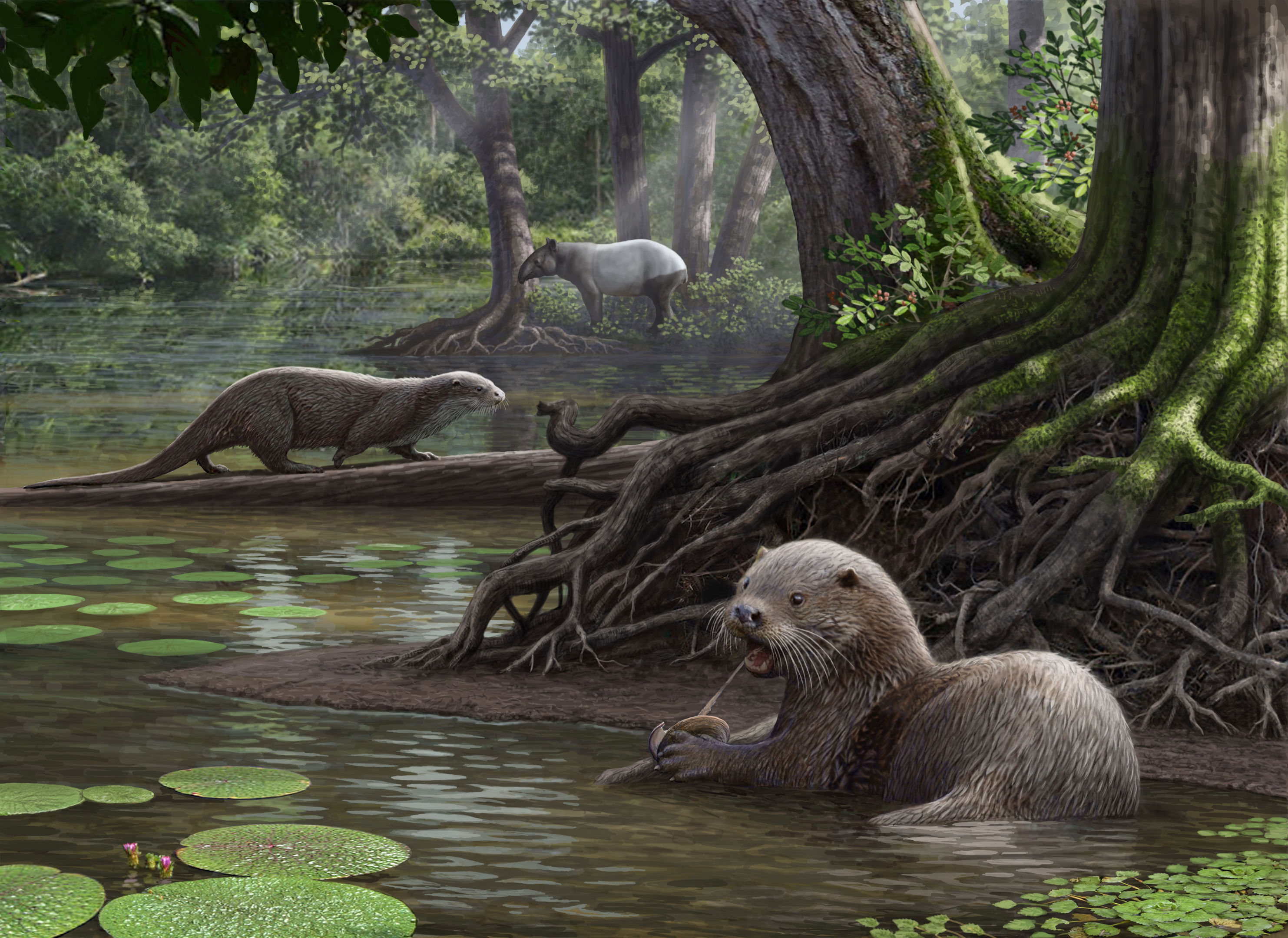
TARKA the Otter had a formidable relative that was a top predator six million years ago, scientists have discovered.
Siamogale melilutra was the size of a wolf and weighed about 110 pounds (50kg).
It also had an unusually powerful bite, which would have allowed it to crush mollusc shells or the bones of birds and small mammals.
All in all, the creature was a far cry from the star of Henry Williamson’s children’s story published in 1927.
Dr Jack Tseng, from the University of Buffalo, US, who led a study of the prehistoric otter’s fossilised skull, said: “We don’t know for sure, but we think that this otter was more of a top predator than living species of otters are. Our findings imply that Siamogale could crush much harder and larger prey than any living otter can.”
The researchers carried out computed tomography (CT) scans of the otter’s skull and those of 10 of its modern relatives to see how they compared.
From the scans they created 3-D virtual computer models which revealed a relationship between jaw stiffness and animals size.
The research showed that S. melilutra had jaws six times sturdier than expected. Paired with the creature’s size, the powerful jaws would have made it an impressive hunter.
Co-author Dr Denise Su, from the Cleveland Museum of Natural History, US, described the otter’s habitat in Shuitangba, southern China.
She said: “At the time that the otter lived, the area where its remains were found included a swamp or a shallow lake surrounded by evergreen forest or dense woodland.
“There was a diverse aquatic fauna at Shuitangba, including fish, crab, molluscs, turtles and frogs, as well as many different species of water birds, all of which could have been potential prey for S. melilutra.”
The research is reported in the journal Scientific Reports.

Enjoy the convenience of having The Sunday Post delivered as a digital ePaper straight to your smartphone, tablet or computer.
Subscribe for only £5.49 a month and enjoy all the benefits of the printed paper as a digital replica.
Subscribe